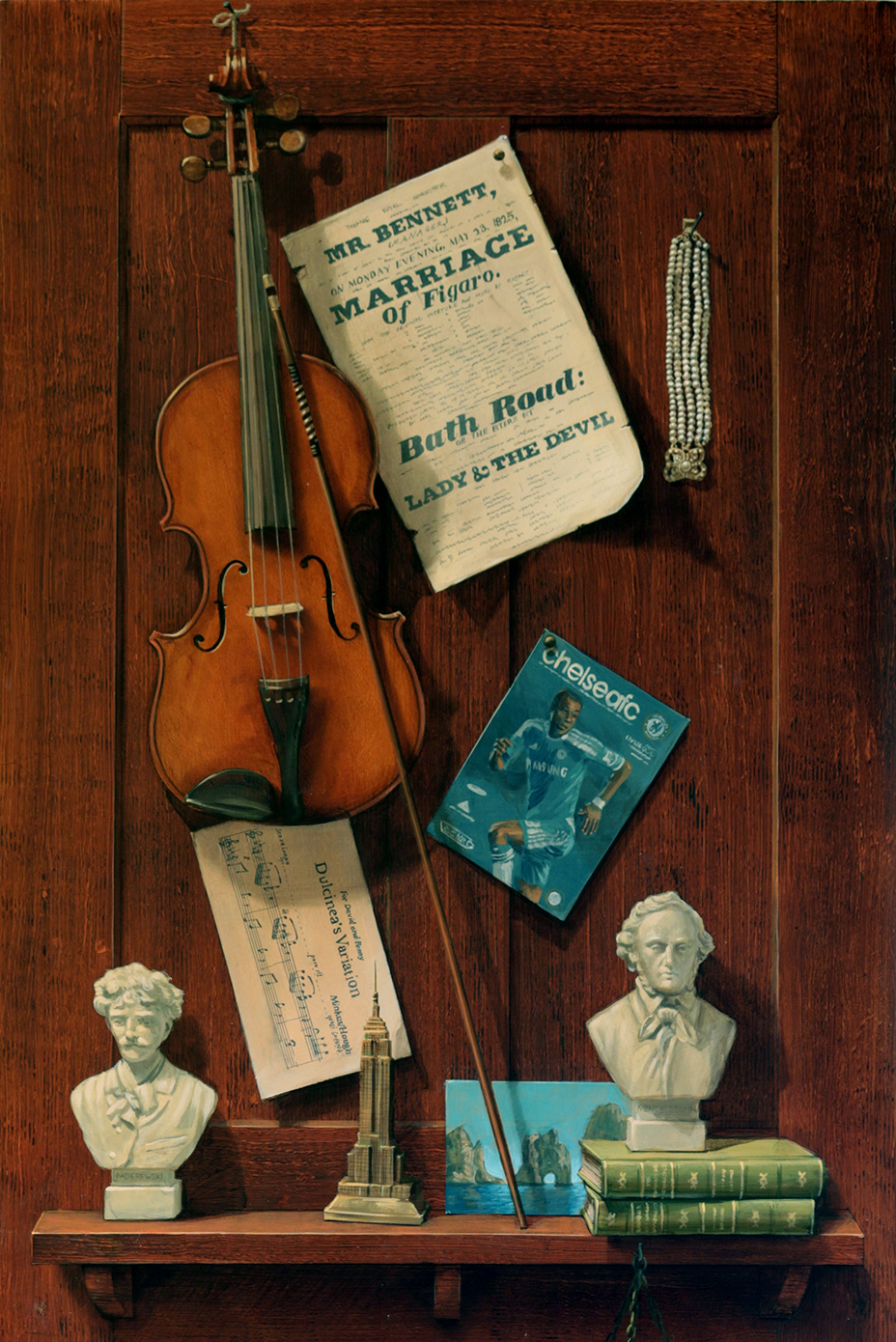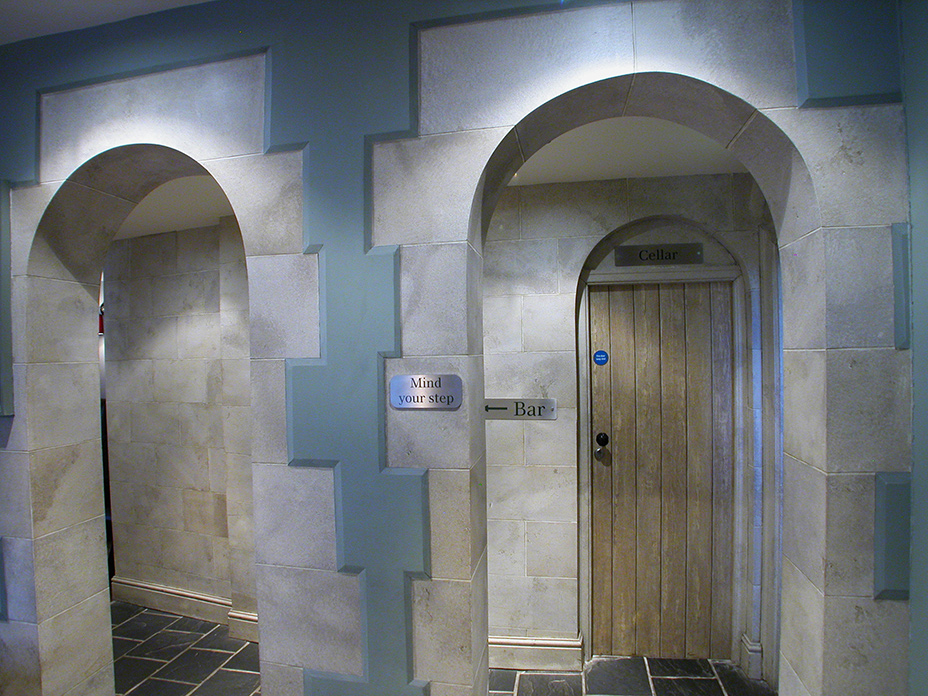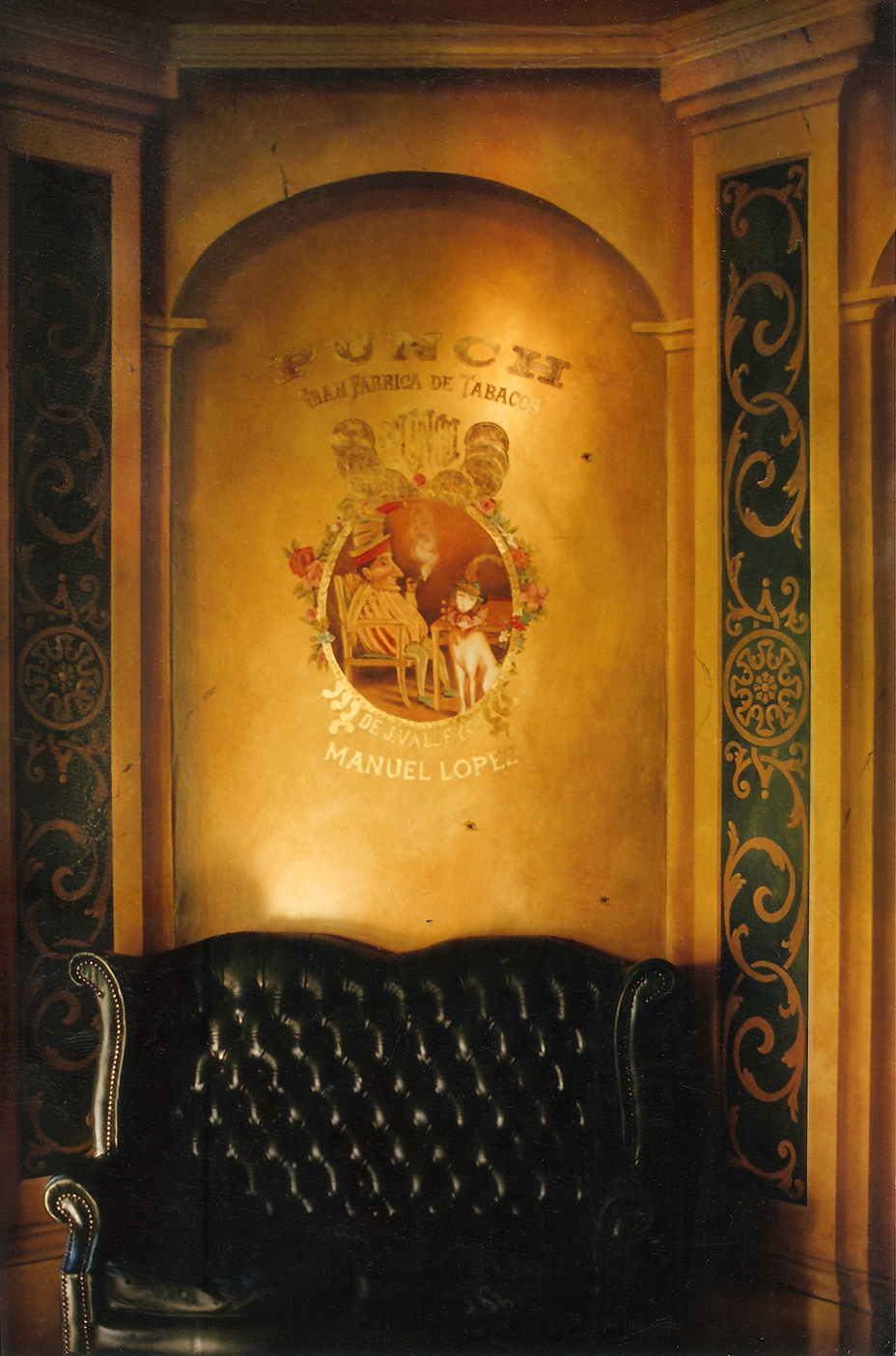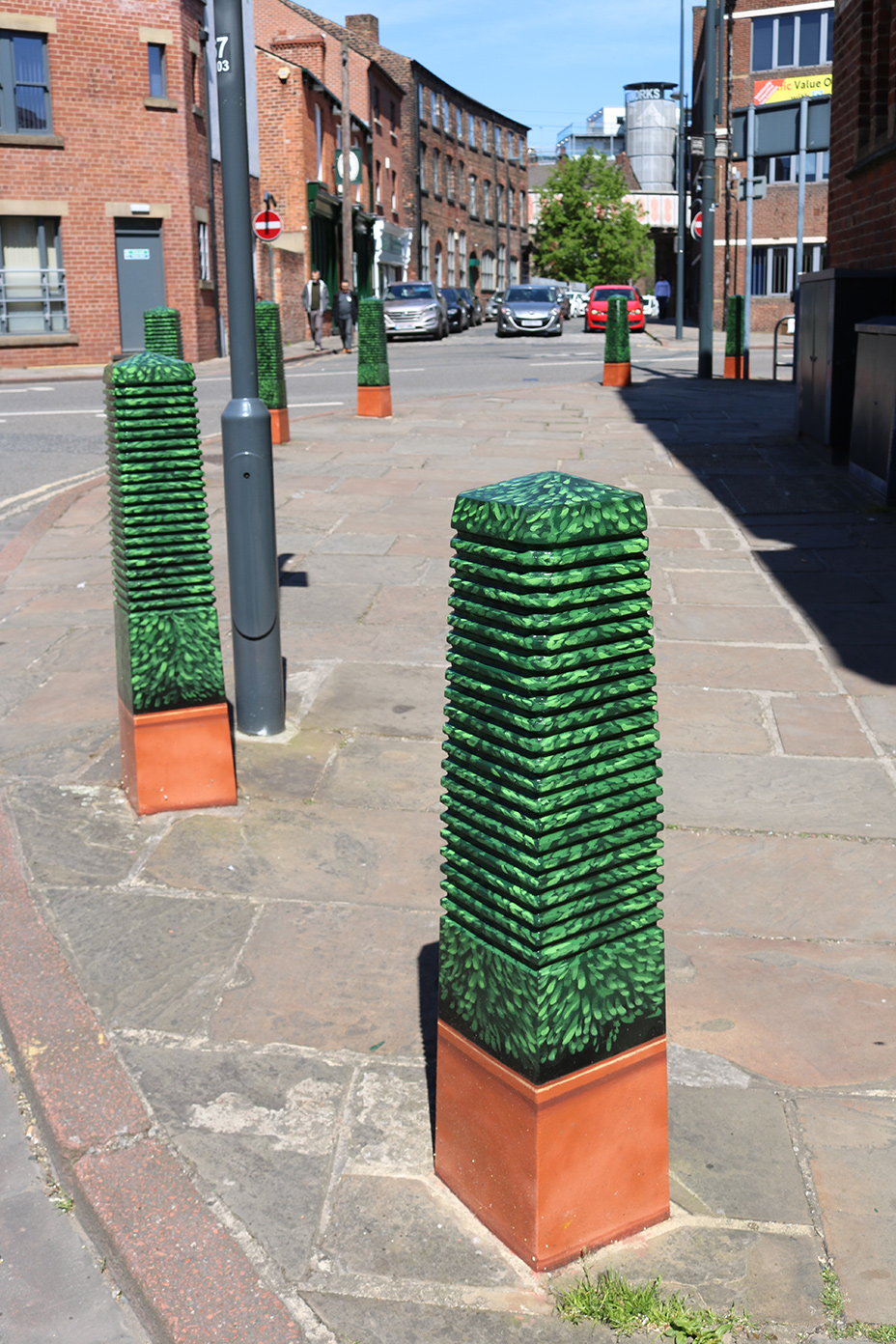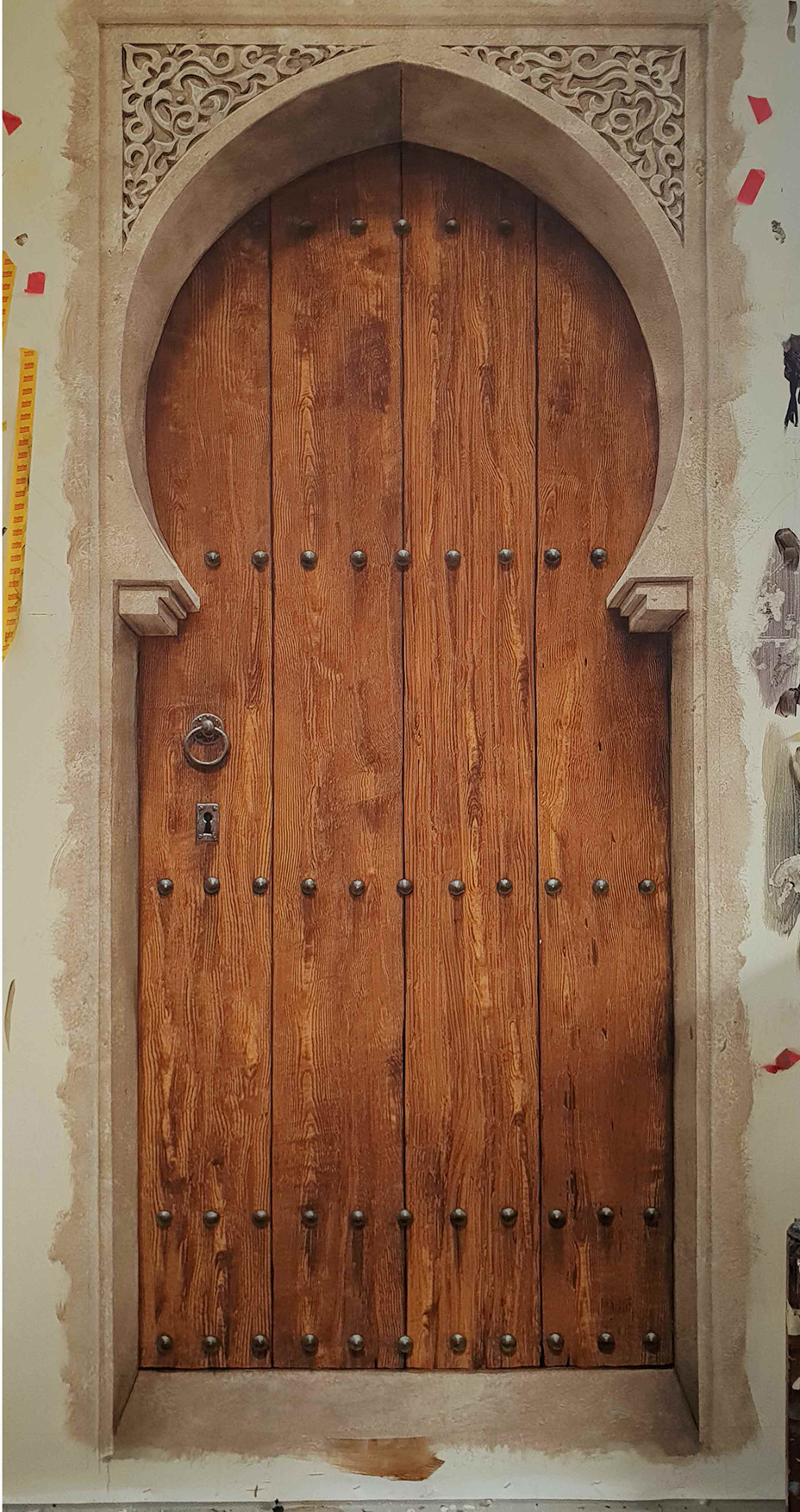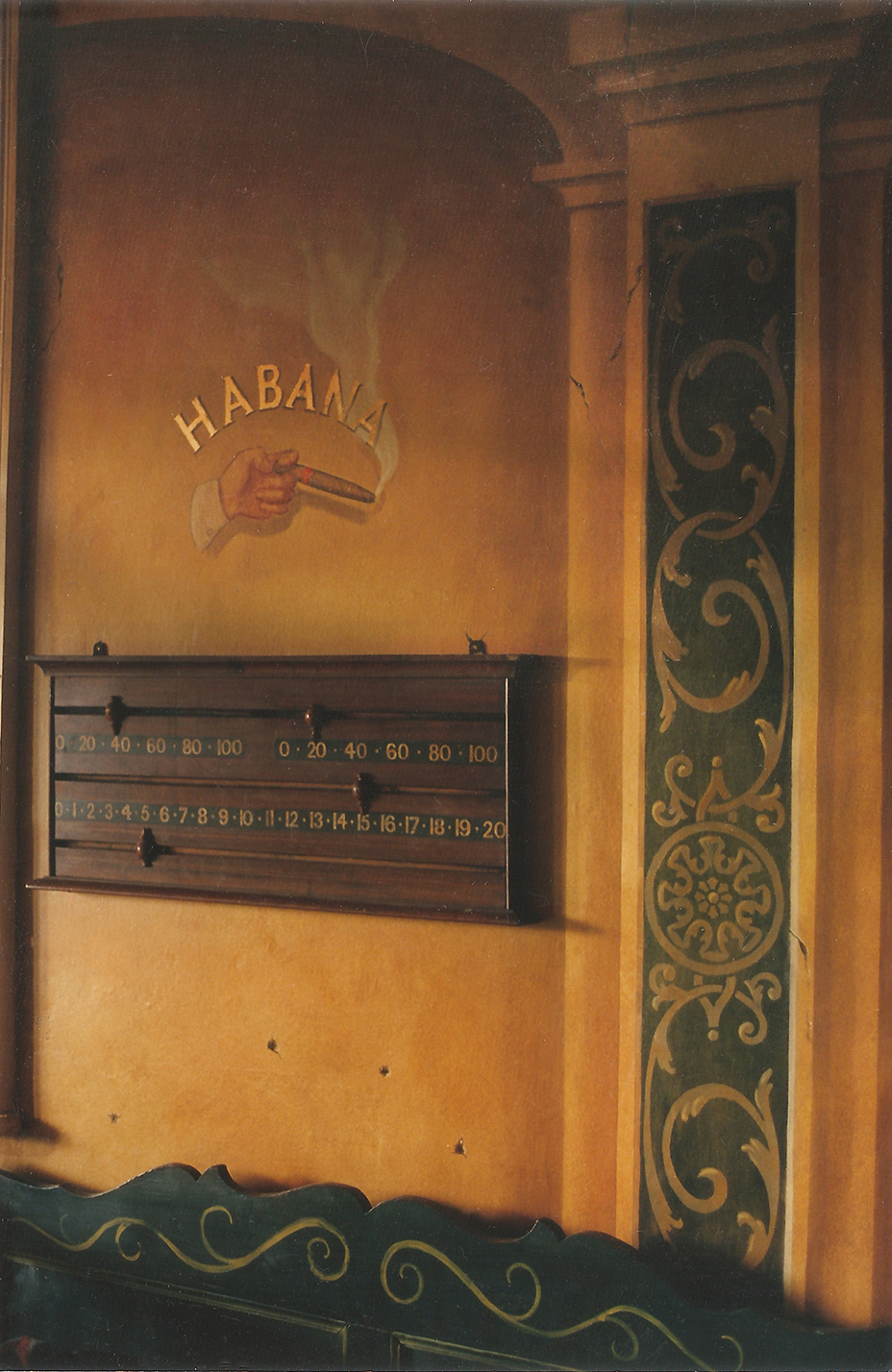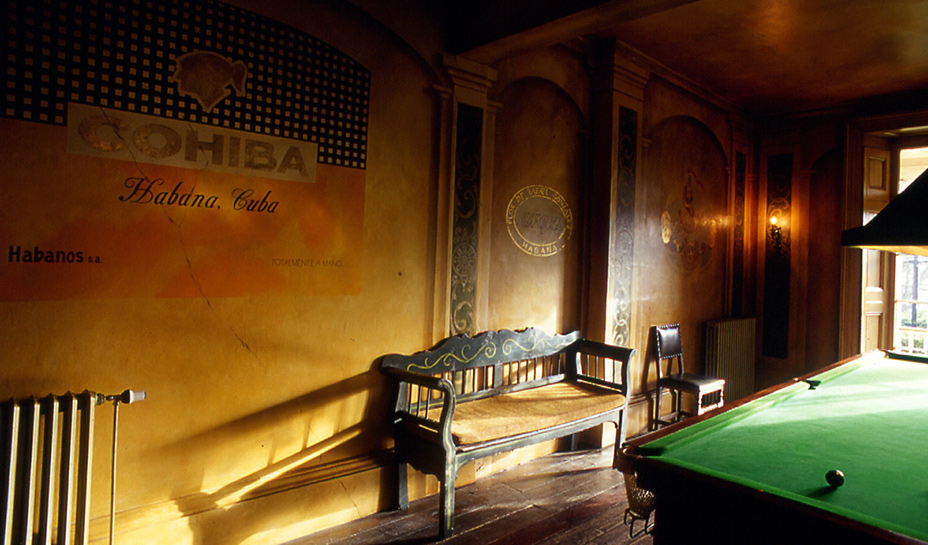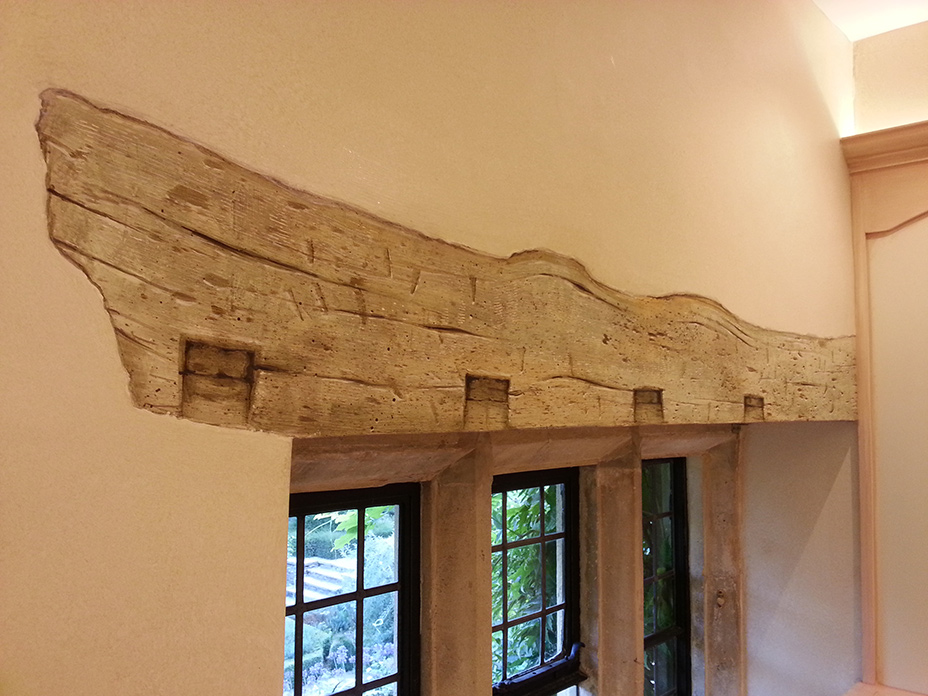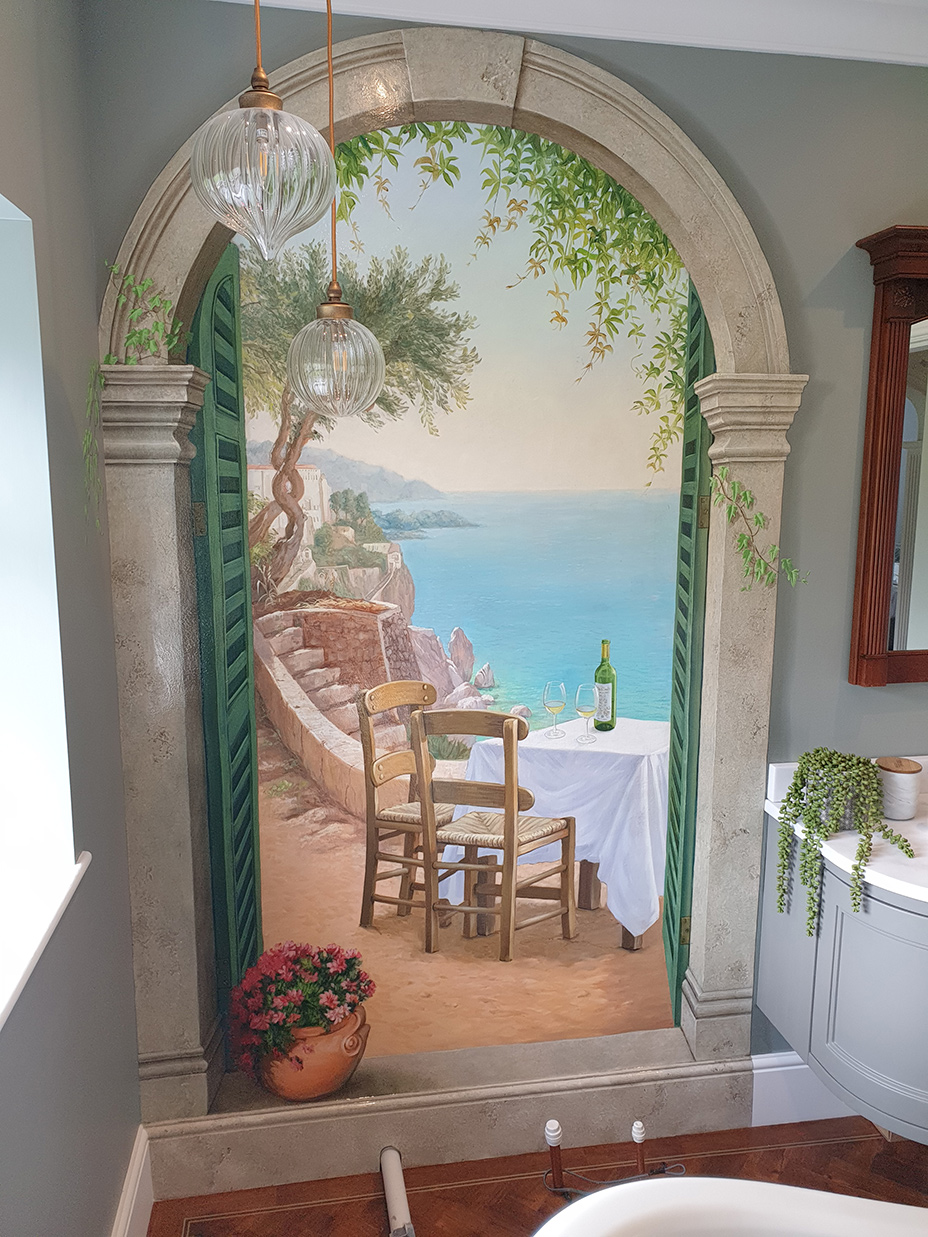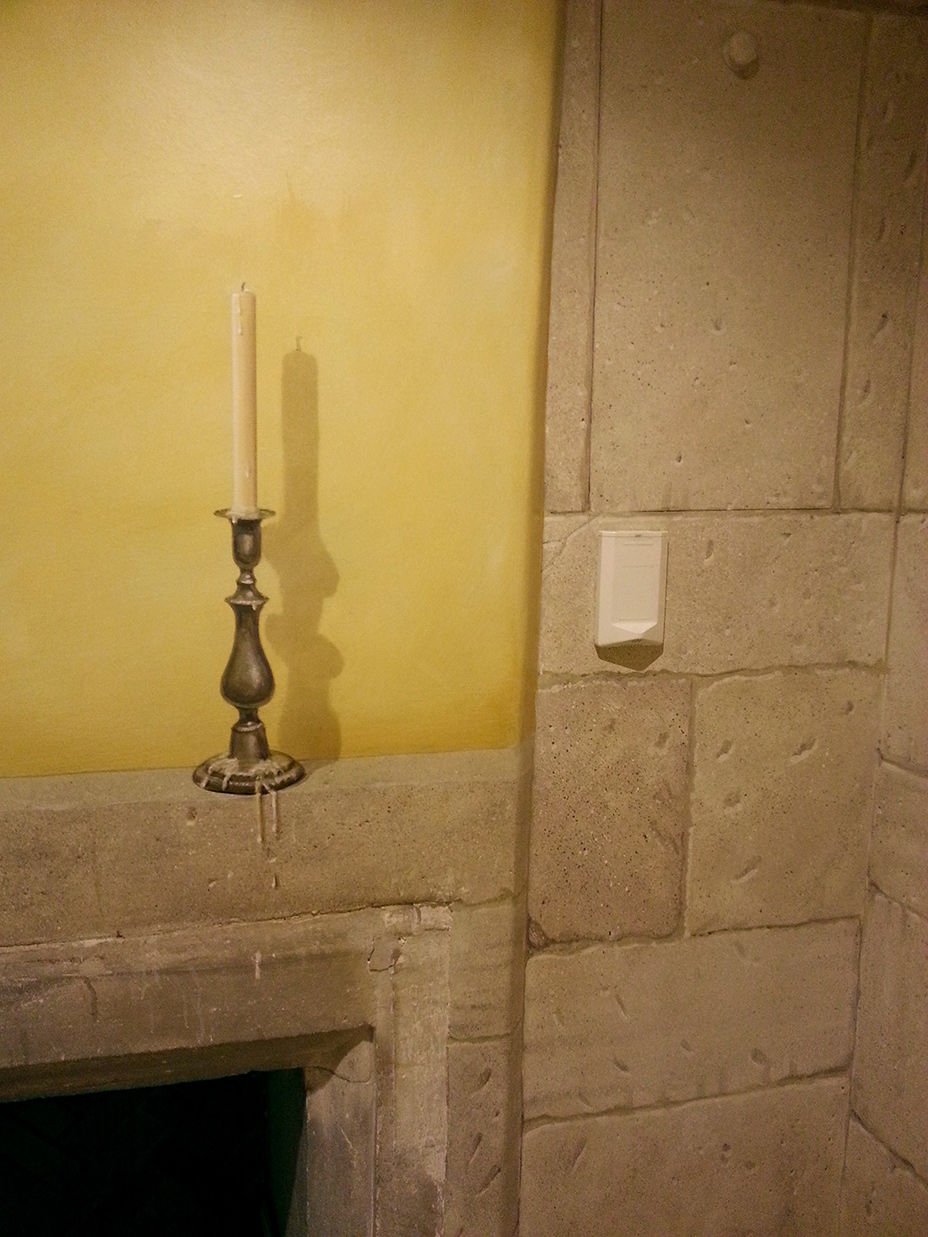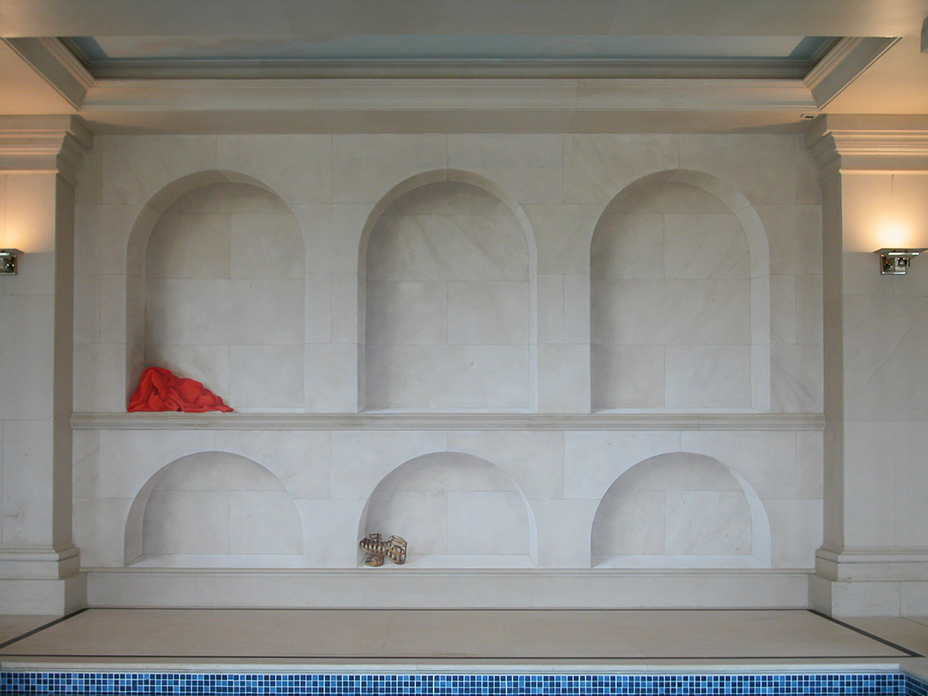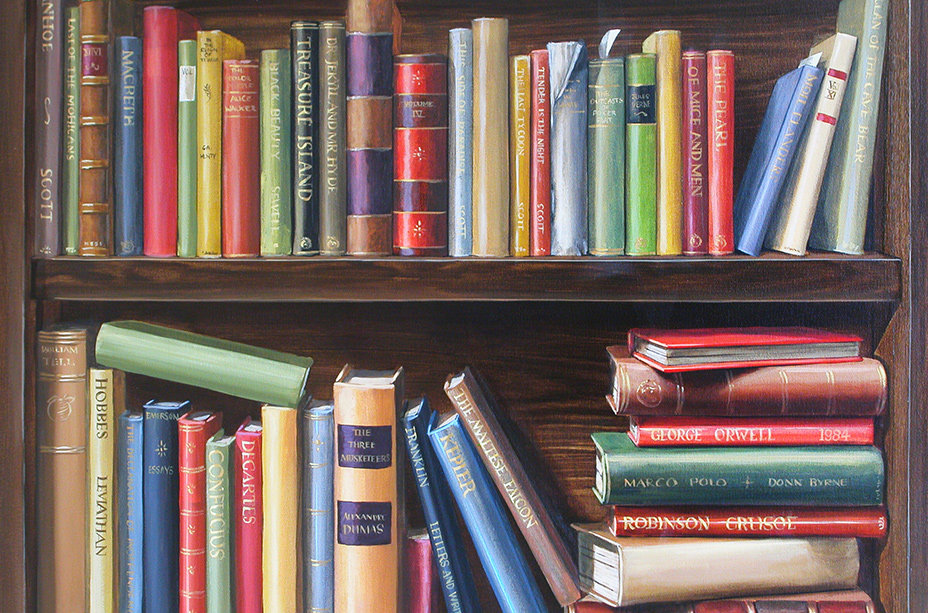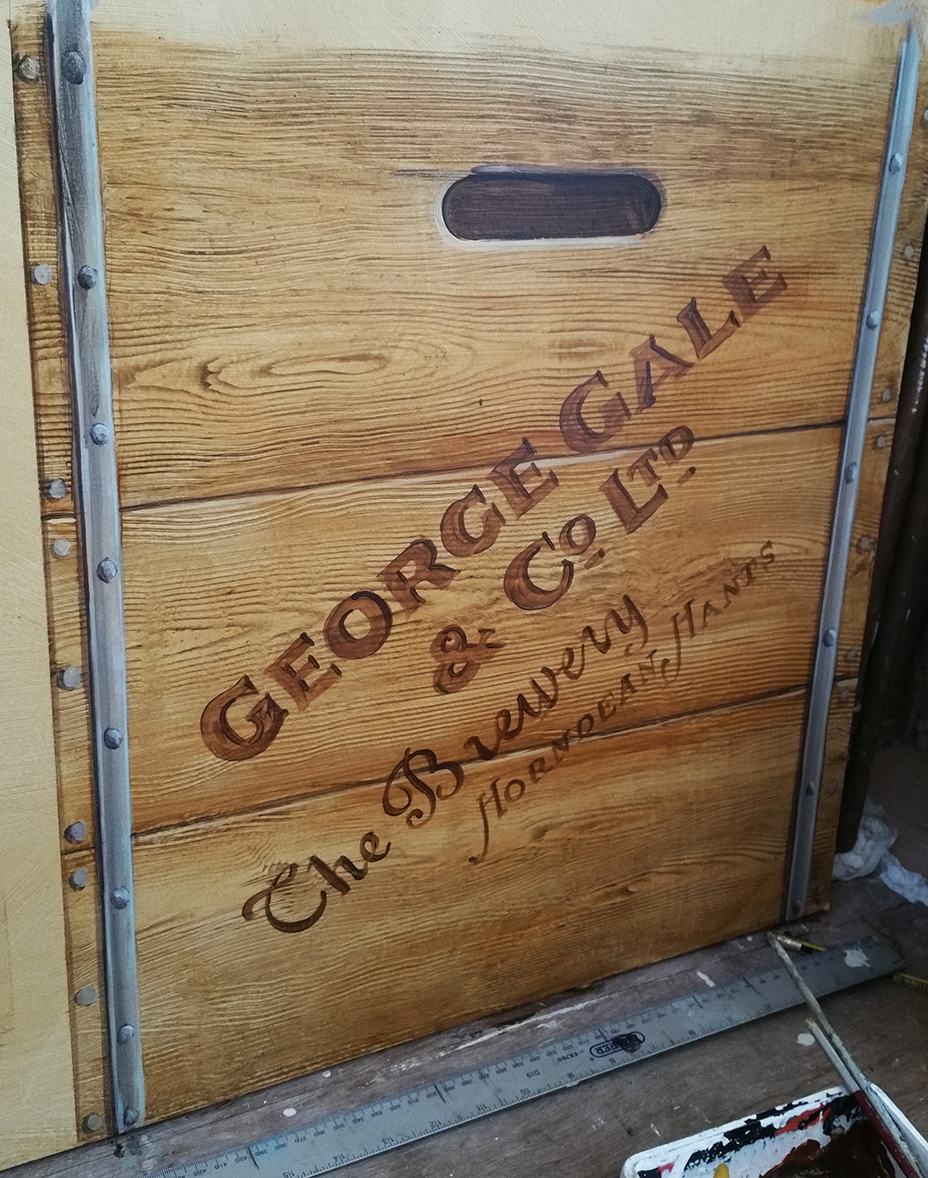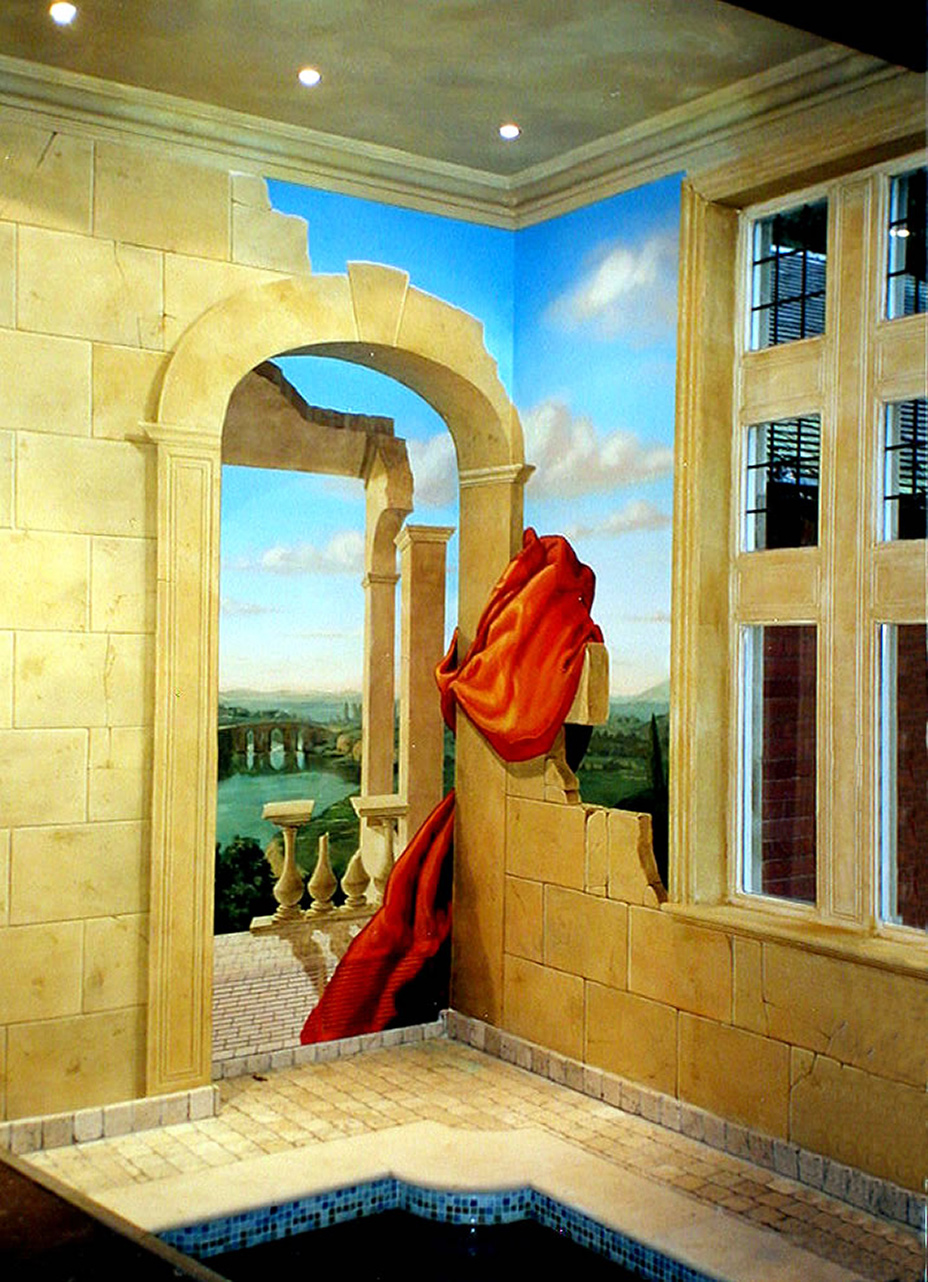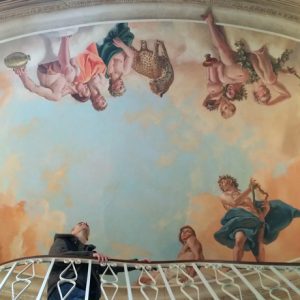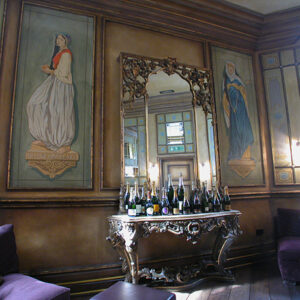This is where you can really have fun.
Trompe l’oeil usually works best when it’s applied subtly and manipulates the expectations of the viewer. It can also be applied to the edges of a mural, to blur the distinction between the painted image and reality. I’ve tried to use this in the past, to have elements of a painting ‘breaking out’ into the real world, and also have the real world creeping into the painting.
When trompe l’oeil becomes too real, it can be dismissed as reality. The real payoff comes when the painting ‘flips’ in your perceptions and you realise you’ve been tricked. It flips because, like other optical illusions, it only exists in one state or another, and never both at the same time.
There can be a fair degree of cross-over between mural painting, paint effects and trompe l’oeil, and often a combination of all three can create some stunning spaces.

